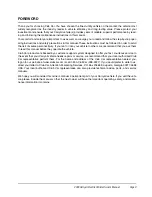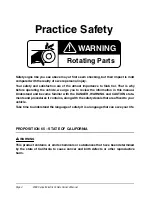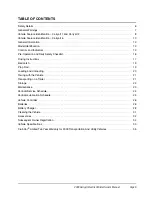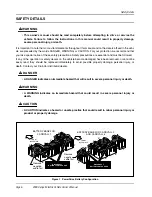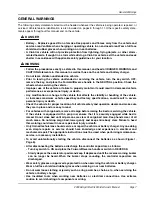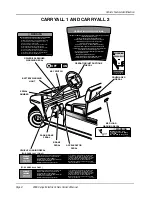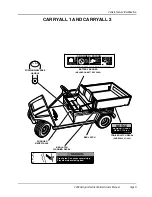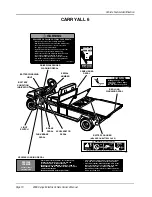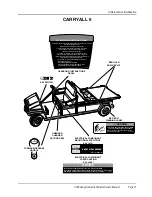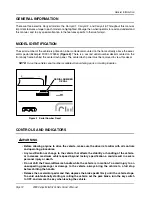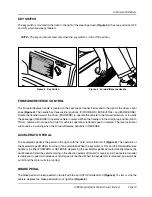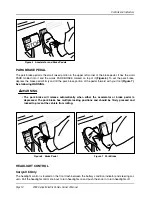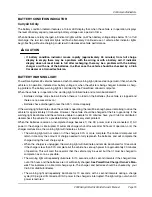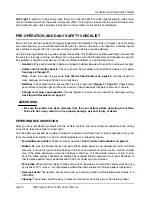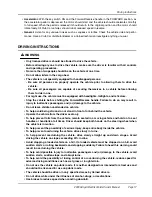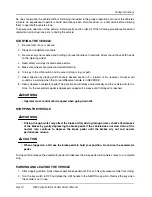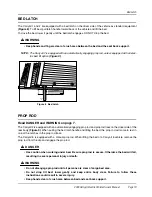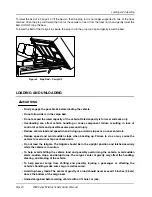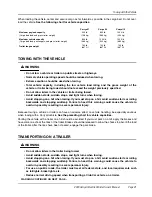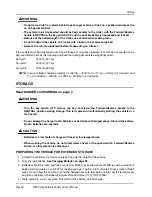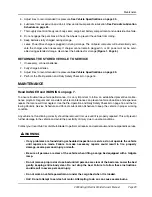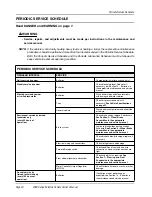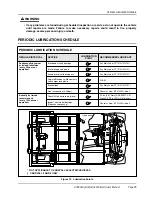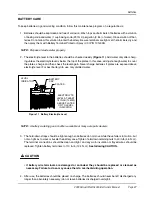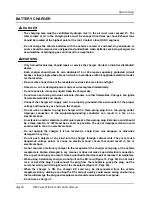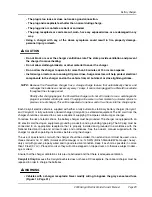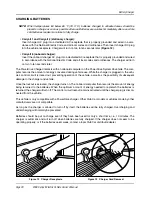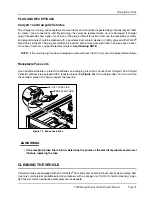
Pre-Operation and Daily Safety Checklist
Page 16
2003 Carryall Electric Vehicle Owner’s Manual
LED Light
: In addition to the warning light, there is an infrared LED in the dash light assembly, which trans-
mits an infrared signal from the onboard computer (OBC). This signal is received by the optional Communica-
tion Display Module, which provides information on the condition of the vehicle and batteries.
PRE-OPERATION AND DAILY SAFETY CHECKLIST
Each Club Car vehicle has been thoroughly inspected and adjusted at the factory; however, upon receiving
your new vehicle(s), you should become familiar with its controls, indicators, and operation. Carefully inspect
each vehicle to ensure that it is in proper working condition before accepting delivery.
Use the following checklist as a guide to inspect the vehicle. This checklist should be used daily to ensure that
the vehicle is in proper working condition and in conjunction with the Periodic Service Schedule on page 24.
Any problems should be corrected by a Club Car distributor/dealer or a trained technician.
• General:
All the parts should be in place and properly installed. Be sure all nuts, bolts, and screws are tight.
• Safety and information decals:
Check to ensure that all safety and information decals are in place.
• Tires:
Check for proper tire pressure.
See Vehicle Specifications on page 33.
wear, damage, and proper inflation on a daily basis.
• Batteries:
Check electrolyte to ensure that it is at its proper level
. Check battery
posts. Wires should be tight and free of corrosion. Charge batteries fully before first use of vehicle.
• Charger cord, plug, and receptacle:
Visually inspect for cracks, loose connections, and frayed wiring.
See Plug and Receptacle on page 31.
∆
WARNING
• Be sure the plastic has been removed from the seat bottom before operating the vehicle.
Failure to do so may result in a fire, property damage, personal injury, or death.
PERFORMANCE INSPECTION
After you have familiarized yourself with the vehicle controls and have read and understood the driving
instructions, take the vehicle for a test drive.
Use the following checklist as a guide to inspect the vehicle and check daily for proper operation. Any prob-
lems should be corrected by a Club Car distributor/dealer or a trained technician.
• Forward/Reverse switch:
See Controls and Indicators on page 12.
• Brakes:
Be sure the brakes function properly. When brake pedal is fully depressed under moderate
pressure, it should not go more than halfway to the floor, and vehicle should come to a smooth, straight
stop. If the brake pedal goes more than halfway to the floor, or if the vehicle swerves or fails to stop,
have the brake system checked and adjusted as required. Brake adjustment must be maintained so
that the brake pedal cannot be depressed to the floor under any circumstance.
• Park brake:
When latched, the park brake should lock the wheels and hold the vehicle stationary (on
an incline of 20% or less). It should release when either the accelerator or brake pedal is depressed.
• Reverse buzzer:
The reverse buzzer will sound as a warning when the Forward/Reverse handle is in
REVERSE.
• Steering:
The vehicle should be easy to steer and should not have any play in the steering wheel.


